 |
Correcting Performance Problems: Identifying Performance Problems (Instructor Guide) |
1.50 |
An attendance problem occurs when an employee fails to report to work, doesn’t give proper notification of an absence, or exceeds the number of days allotted for absence.
You should address attendance problems carefully. Handling these problems poorly can lead to serious consequences, such as frequent employee turnover or workplace aggression. Before confronting an employee with an attendance problem, you need to identify the type of attendance problem and determine its severity.
In this course you will learn to: identify the types of attendance problems, assess their impacts, and determine a problem’s severity, identify the types of achievement problems, assess their impacts, and determine a problem’s severity, identify the types of conduct problems, assess their impacts, and determine a problem’s severity. |
 |
Paraprofessional Writing Skills Applied to Classroom Instruction |
2.00 |
This course is designed to meet your professional development needs. It can be taken as a stand-alone learning event, as part of a broader paraprofessional curriculum, or in preparation for the ParaPro Assessment.
This course covers Paraprofessional Writing Skills Applied to Classroom Instruction. It is one out of two Paraprofessional Writing Skills courses, and one out of eight ParaPro prep courses that will prepare you on K-12 topics. This course will help you develop your knowledge of these writing concepts and help you apply them to abstract and real-life situations. After taking these prep courses, you should be prepared for the ETS ParaPro Assessment.
|
 |
Introduction to Fireground Size-up |
2.00 |
This course is an extensive introduction to fireground size-up and is a prerequisite for all other Vigilant size-up courses. This lesson defines the term size up and describes its purpose in fireground operations. The elements of a proper size-up are defined and described. The course introduces a five-step procedure for implementing the size-up process on the fireground. Each step of this procedure is defined and described with an explanation of the elements that are identified during each step. The lesson concludes with an overall summary and final evaluation. |
 |
Introduction to Fireground Communications |
0.50 |
This course defines communication and identifies five components of a fireground communication model. Each component is described in detail and a procedure for implementing the components is reviewed. The different types of common fireground communications are described and examples of each are given. |
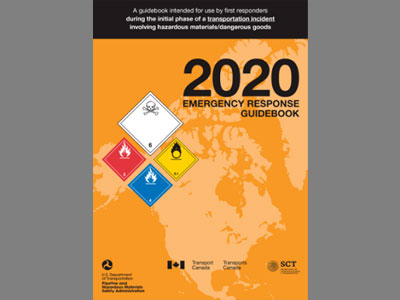 |
Emergency Response Guidebook Activity |
1.50 |
This course is an activity that requires the first responder to utilize the Emergency Response Guidebook to solve a variety of problems. The solution to each of these problems can be found using the 2020 Emergency Response Guidebook Version. Students will need to have a copy of the Emergency Response Guidebook Version 2020 to complete this activity. A 2020 Emergency Guidebook PDF is available for download in this lesson if a copy of the book is not available to the student.
It should be noted that this is an in-service training activity. The student must have prior knowledge and training regarding the Emergency Response Guidebook prior to engaging this activity.
|
 |
Fire Suppression Tactics |
1.00 |
No other tactic on the fireground has a higher potential for saving lives and protecting property than Fire Suppression. Suppression on the fireground can be deployed in multiple strategies and performed through a variety of methods. This course will discuss the application of suppression tactics and tasks while operating in different operational modes under strategies selected as a result of assessed risk. Application of these suppression tactics are matched with the appropriate strategy and task methods are introduced. Each type of suppression task method is described in detail along with a review of its specific strengths and weakness. |
 |
Initiating an Emergency Response |
0.50 |
This course describes a procedure for responding to the report of an emergency. This course will describe how to initiate an emergency response when receiving alarms via the firehouse non-emergency-phone, a walk up to quarters, and reporting an emergency that occurs in the firehouse. This course reviews the skills required to use equipment to receive, record, and transmit an incoming alarm. This course also includes several scenarios during which the student uses a simulated procedure to initiate a response to several types of reported emergencies. The clock time for this course is approximately one-half hours. |
 |
Fire Prevention Principles |
1.00 |
This course will introduce the firefighter to the modern principles of fire safety. Just as the fire service has evolved since colonial times, so has the professional approach to fire prevention and safety. The fire service is at the heart of the current fire safety program, and firefighters must understand the concepts and principles at the core of these programs. This introductory course will describe these concepts and principles as well as identify where and how the firefighter fits into these programs. The clock time for this course is approximately one hour. |
 |
Cross-Cultural Business Communication: Overcoming Communication Barriers (Instructor Guide) |
1.00 |
There are several barriers that can affect cross-cultural communication. Generally, barriers have a negative effect on communication because they might distort the speaker’s message or the listener’s understanding. It is important to understand these barriers to communicate effectively with people from different cultures.
In this course you will learn to: identify common cross-cultural communication barriers, overcome communication barriers and avoid cultural bias, and employ qualified interpreters and communicate through them.
This Instructor's Edition of this course includes notes and suggestions to assist you in presenting the material, whether in an in-person classroom setting, or as an instructor-led online or distance-learning course. It also provides you with the answers to questions found in mid-lesson activities, as well as in the quiz that concludes the course. |
 |
Paraprofessional Writing Skills |
2.00 |
This course is designed to meet your professional development needs. It can be taken as a stand-alone learning event, as part of a broader paraprofessional curriculum, or in preparation for the ParaPro Assessment.
This course covers Paraprofessional Writing Skills. It is designed to help you review and further develop fundamental writing skills. This course is one of two paraprofessional writing courses, and one of eight ParaPro prep courses that cover various K-12 topics. After completing these prep courses, you will be better prepared for the ETS ParaPro Assessment. |
 |
Salvage Operations |
1.00 |
This introductory level course introduces the concept of salvage operations. The course defines salvage operations and describes techniques used to protect buildings and contents from damage caused by fire suppression operations and preserve evidence of fire origin. This course is evaluated with a final quiz. The clock time for this course is approximately one clock hour. |
 |
Fire Origin and Cause – Basic |
2.00 |
This course is an introductory level course that defines fire cause and origin investigation and arson awareness. This course explains fire origin, cause, and arson and a description of common fire causes. Fire cause classifications are defined, and arson motives are described. Signs of arson are identified, and methods for evidence preservation are outlined. The course is evaluated with a final exam that requires a passing score of 80%. The clock time for this course is approximately 2-hour. |
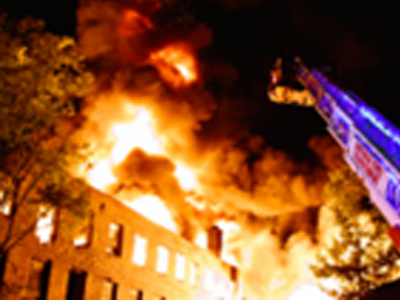 |
Fireground Operations - Strategy Tactic Task |
2.00 |
This course introduces a common language for fireground operation; strategy, tactics, and tasks in an effort to create a standardized interpretation of terminology. This course describes safe strategy selection, defines prioritized tactical objectives, and lists assigned tasks for each tactical objective dependent on strategy. This course introduces the idea of five primary tactical objectives, five secondary tactical objectives, and five functions of command that must be accomplished on every fireground. The course concludes with a procedure for the application of selecting a safe strategy, prioritizing effective tactical objectives, and assigning efficient tasks through the function of command. |
 |
Fireground Operations: Safe Strategy |
2.00 |
This introductory course describes fireground strategy selection to create a safe operation. The course introduces the concept of safe fireground strategy and presents a procedure for selecting a strategy through risk assessment. Two operational modes are established, and five strategic plan options are defined for each mode. The course focuses on fire safety principles and scene safety awareness. The course is evaluated with a multiple-choice exam and requires a passing score of 80%. The clock time for this course is approximately two hours. |
 |
Fireground Communications - BASIC |
2.00 |
This course is an introductory-level presentation that introduces the firefighter to the concept of fireground operations. Fireground communication is integral to effective fireground operations, and proper communications are critical to firefighter safety. This course describes the standard communication model, identifies the communication system, and provides a procedure for conducting proper radio communications, from receiving the alarm, through operating the fireground, to terminating incident command. The course is evaluated with a final exam requiring a score of 80%. Firefighters who complete the course are provided with course materials to aid learning and further their education. The clock time for this course is approximately two hours. |
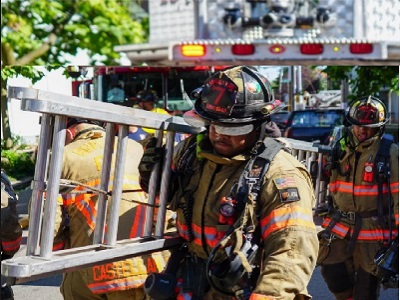 |
Fire Service Ground Ladders - BASIC |
1.00 |
This course is a basic-level introduction and review of fire service ground ladders. This course introduces the seven types of fire service ground ladders as defined by NFPA. The course includes a review of ground ladder construction, ground ladder selection by task, and safe operation of the fire service ground ladder. The course is evaluated with a multiple-choice exam that requires a passing score of 80%. The course length is approximately one hour. |
 |
Cross-Cultural Business Communication: Differences In Communication (Instructor Guide) |
1.00 |
When communicating with people of another culture, it is important to be aware of the person’s level of active participation in a conversation. In some cultures, highly active participation is the norm, while other cultures dictate a more passive involvement.
The exchange between people engaged in communication demonstrates conversational involvement. In any culture, a message must have both a sender and a receiver. In cultures with high conversational involvement, the receiver would send verbal and nonverbal cues, such as eye contact, nodding, and interjections, such as "I’m listening" or "Tell me more." In cultures with low conversational involvement, receivers would adopt a passive posture, perhaps staring at the ground with hunched shoulders, and would simply absorb the message without offering cues on whether they are listening or not.
In this course you will learn to: identify the differences in verbal communication across cultures, and improve your nonverbal communication skills by understanding the differences in gestures and expressions that vary across cultures.
This Instructor's Edition of this course includes notes and suggestions to assist you in presenting the material, whether in an in-person classroom setting, or as an instructor-led online or distance-learning course. It also provides you with the answers to questions found in mid-lesson activities, as well as in the quiz that concludes the course. |
 |
Development and Characteristics of Learners for Paraprofessionals |
1.00 |
This course walks you through each of the 13 disability categories identified by the IDEA. As one of many paraprofessional courses we offer, Development and Characteristics of Learners will assist you in fostering a solid understanding of your role as a paraprofessional. This course will also help you gain invaluable insight into the students you serve in your workplace. |
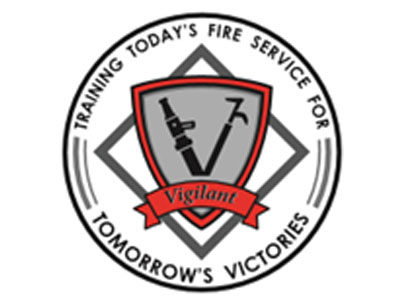 |
Strategy Tactic Task #1431a (Instructor Guide) |
1.00 |
This is the Instructor Guide for Lesson #1431a Strategy Tactic Task. This instructor guide provides the instructor with lesson background, key points, and delivery methods. Required lesson materials including lesson plan, presentation, and evaluation quiz with answer key. Included in this guide is an explanation video of the presentation that describes each slide of the lesson. |
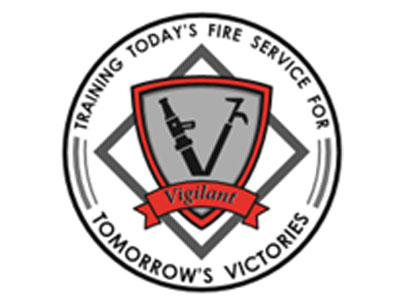 |
SCBA Review #1951 (Instructor Guide) |
1.00 |
This is the Instructor Guide for Lesson #1951 SCBA Review. This Instructor Guide is intended to prepare a lead instructor to deliver this course curriculum. Included in this guide is a review of lesson content, instructions for conducting the lesson skill activity and all required lesson materials. The lead instructor must pass this instructor guide course with a minimum score of 80% to receive the course materials for this lesson. |
 |
Risk Management #1921 (Instructor Guide) |
1.00 |
This is the Instructor Guide for Lesson #1921 Risk Management. This instructor guide provides the instructor with lesson background, key points, delivery methods, and required materials. Included in this guide is an explanation video of the presentation that describes each slide of the lesson. This guide also details the class activity and provides instruction for presenting it as a conclusion to the lesson. |
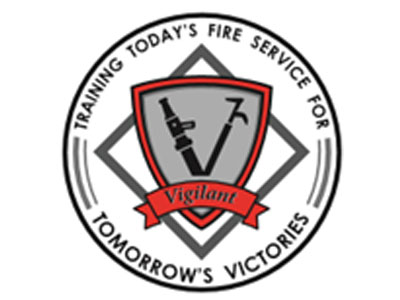 |
Fire Behavior Basics #401 (Instructor Guide) |
1.00 |
This is the Instructor Guide for Lesson #401 Fire Behavior Basics. This instructor guide provides the instructor with lesson background, key points and delivery methods. Required lesson materials including lesson plan, presentation, and evaluation quiz with answer key. Included in this guide is an explanation video of the presentation that describes each slide of the lesson. |
 |
Basic Building Construction #1511 (Instructor Guide) |
1.00 |
This is the Instructor Guide for Lesson #1511 Basic Building Construction. This instructor guide provides the instructor with lesson background, key points, and delivery methods. Required lesson materials including lesson plan, presentation, application activity, and evaluation quiz with answer key. Included in this guide is an explanation video of the presentation that describes each slide of the lesson. This guide also details the lesson application activity and provides instruction for assigning the activity. |
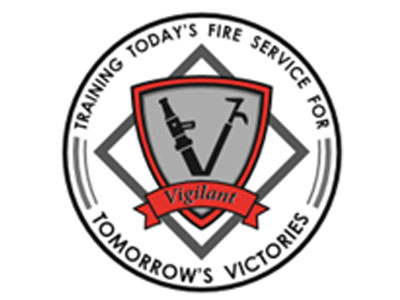 |
Ground Ladder Skills Practice #1302 (Instructor Guide) |
1.00 |
This is the Instructor Guide for Lesson #1302 Ground Ladder Skills Practice. This Instructor Guide is intended to prepare a lead instructor to deliver this course curriculum. Included in this guide is a review of lesson content, instructions for conducting the lesson skill activity and all required lesson materials. The lead instructor must pass this instructor guide course with a minimum score of 80% to receive the course materials for this lesson. |
 |
Cross-Cultural Business Communication: Cross-Cultural Business Situations (Instructor Guide) |
1.00 |
You might be asked to attend or take part in cross-cultural meetings. Although cross-cultural meetings are common when you travel to a foreign country, they can also take place when several cultures send their representatives to attend meetings. These meetings might also take place over the telephone, online, or in a video conference.
In this course you will learn to: attend and organize cross-cultural meetings, conduct negotiations, and solve problems during a cross-cultural meeting.
This Instructor's Edition of this course includes notes and suggestions to assist you in presenting the material, whether in an in-person classroom setting, or as an instructor-led online or distance-learning course. It also provides you with the answers to questions found in mid-lesson activities, as well as in the quiz that concludes the course. |


























